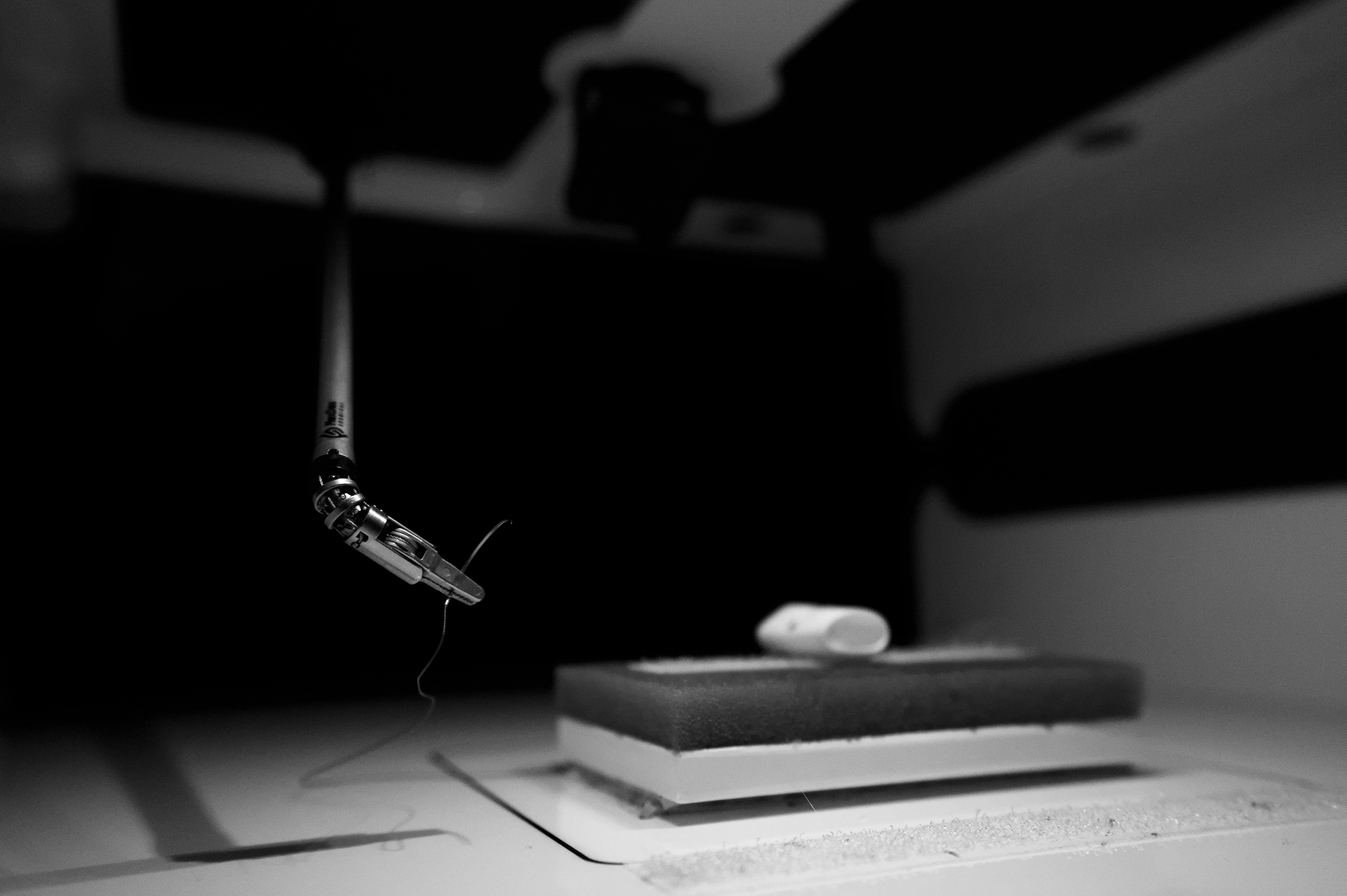Articulating laparoscopic instruments with a mechanical makeup are among the latest and greatest innovations in minimally invasive surgery due to their low cost and high maneuverability. My research evaluates the performance of veterinary surgical novices using a traditional laparoscopic needle driver (rigid) versus a novel articulating analogue (pictured) while completing a standardized suturing task with a simulator. By determining performative differences, we can gain insight into how clinical implementation would fare which impacts training, surgical outcomes, and procedural accessibility.
